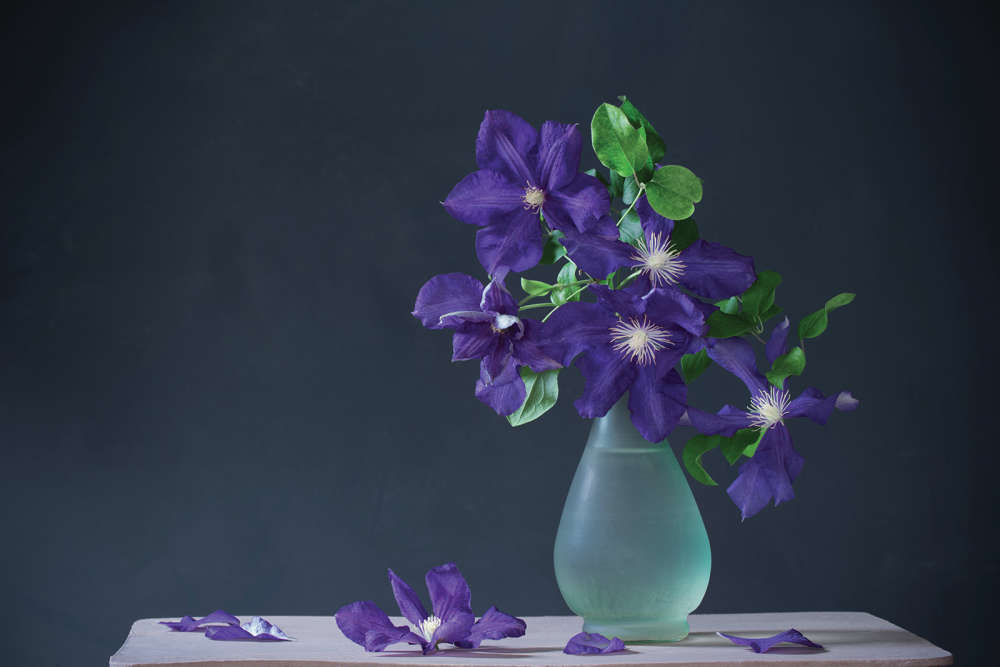
The clematis family offers flowers in a wide array of colours and shapes, and there are varieties for nearly every month of the year, says Flo Whitaker
When considering a clematis, choose the planting site with care. Clematis are contrarian by nature; requiring a sheltered spot with their heads in full sun/light shade and their feet in cool, moisture-retentive soil – but too-wet soil, (particularly prolonged winter wet) will cause root rot. Yes, they are ‘Goldilocks’ plants; however, get the planting position ‘just right’ and they will thrive.
When actively growing they’ll guzzle gallons of water; like rhubarb and hydrangeas, they’re a plant you should consider watering – even when it’s raining. Adding plenty of humus-rich compost and leaf mould to the planting hole is always beneficial. A thick mulch applied annually to the soil surface will conserve moisture. This can be in the form of old potting compost, chipped bark or gravel. If space allows, adding some ground-cover plants at the base will protect clematis roots from hot sunshine.
Left to their own devices, clematis quickly make confusing tangles of growth. Alas, the pruning advice found in many gardening publications is equally impenetrable, which does nothing to inspire confidence when wielding the secateurs. Fortunately, pruning is a straightforward task, so long as you identify the type of clematis you’re working with.
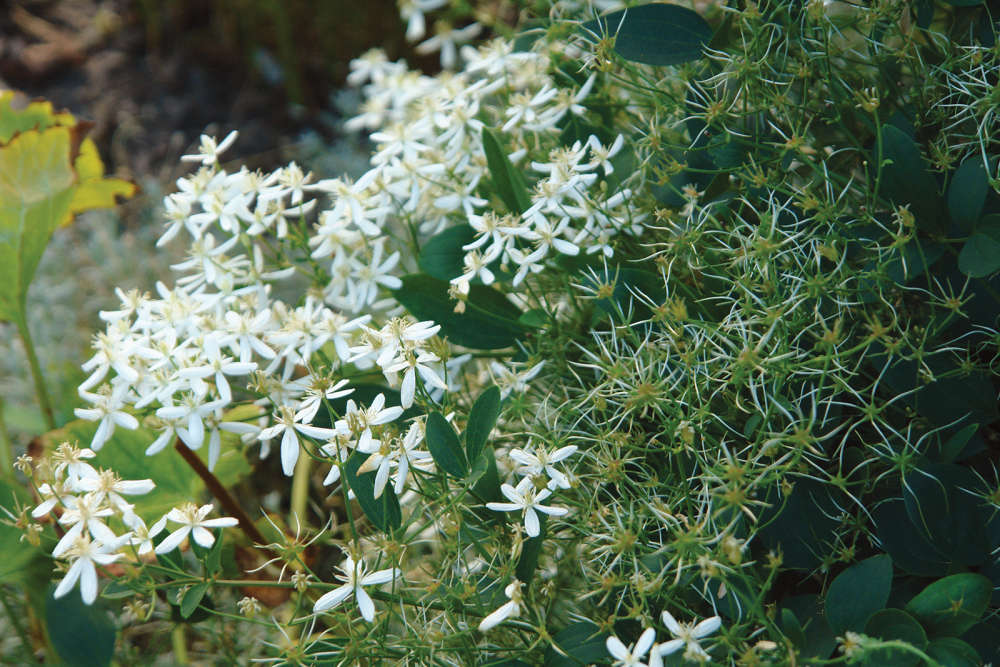
Clematis are divided into three groups; each with its own pruning classification. When purchasing a new plant, the group/ type may be noted on the label, (or not – don’t get me started on the topic of useless plant labels. Just don’t!) If you know its name, then it’s easy to look up the classification, but what if your clematis is an old plant inherited with a new garden – how to identify it? Ask yourself three simple questions and the answer will appear; is it evergreen or deciduous, what size are the flowers and what time of year does it bloom?
Group 1 clematis typically bloom from late winter through to early spring. This group includes many evergreen forms and their flowers are usually small in size. For these types, prune immediately after flowering. They do not respond well to aggressive cutting back, so a gentle ‘tidy up’ haircut is usually all that’s required in order to remove encroaching or damaged stems. Some years, no pruning at all will be necessary – go easy with those snippers! However, there are always horticultural rule-breakers.
Forms of Clematis montana can display super- vigorous, thuggish tendencies. Subject them to violence with shears if you can no longer find your front door. Group 2 types are mid-season performers, often with larger flowers and blooming from (say) late April, through May and June. Their old growth should be cut down to about 30cms in early spring. Group 2’s mostly put on spectacular displays, then spend the rest of summer resting, but if you prune again very lightly at the end of June and keep them well-hydrated, they may be encouraged to flower in late summer. This second flush will be less floriferous – but extra blooms are always welcome.
Group 3 clematis are high-summer performers; many will repeat-bloom into September. Vigorous and fast- growing; their pruning regime couldn’t be easier. Every spring, simply cut all the previous year’s growth back to approximately 30cms and they will soon shoot away.
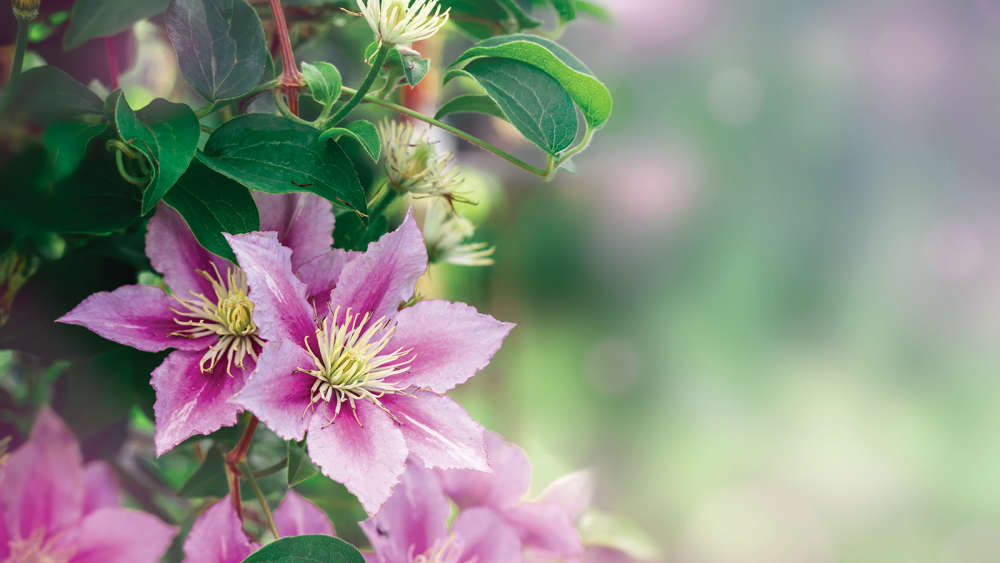
Containerised specimens are particularly susceptible to drought and their top-heavy growth can make them unstable, so use a soil-based compost, which is heavier than general potting compost and will also hold nutrients for longer. Take care when choosing a clematis for a patio pot, as many will be too tall for the situation – there’s nothing sadder than the sight of a struggling plant in cramped conditions.
Some varieties are more scrambling in habit, echoing their hedgerow ancestry, (Clematis vitalba is more commonly known as ‘Traveller’s Joy’ and ‘Old Man’s Beard’.) Scramblers can be usefully employed to climb up trees, over hedges and through large shrubs, but double-check before you buy as some energetic types can attain ten metres! Many modern varieties have been bred especially for patio pots; offering a long flowering season and a shorter, bushier growth habit.
Clematis are mostly easy to cultivate, although slugs and snails can be particularly troublesome on young, succulent foliage. What gardeners fear most is Clematis Wilt, a fungal infection that affects the plant’s vascular system, leading to wilting – possibly death in extreme cases. However, plants become limp for many reasons, (often moisture- related; soil too wet/dry) and Clematis Wilt is actually quite rare, so don’t be put off. Plant clematis deeper, (approx. 5 cms) below the usual planting level as they root readily from underground stems. If disaster occurs, removal of the affected top growth will encourage new shoots to emerge from below.
Whatever colour you fancy; whether you’re after speckled or pyjama-striped petals; wide saucer-shaped blooms or dainty nodding fairy bells; there is a clematis for you. Some are lightly scented too. Surprisingly, perhaps; their flowers last for several days in a vase. Cut the stems in early morning or at dusk, (avoid hot sunshine), then stand them in deep water for a few hours before arranging. If time is short, or flower arranging is not your forte, scatter clematis flower heads in a shallow dish of water.
This looks enchanting as a dining table centrepiece, especially when supplemented with floating candles. No posh floating candles to hand? Never mind, ordinary nightlights float too. Your guests are guaranteed to be impressed and they’ll think you’re marvellously artistic. I’ll graciously permit you to take all the credit – you can pretend it was your idea...
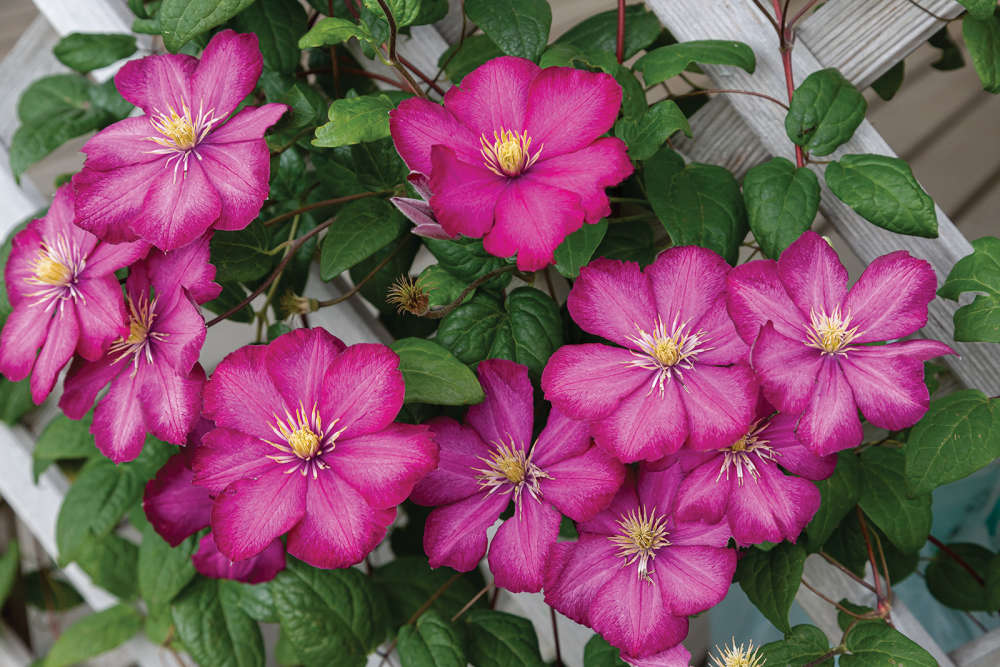

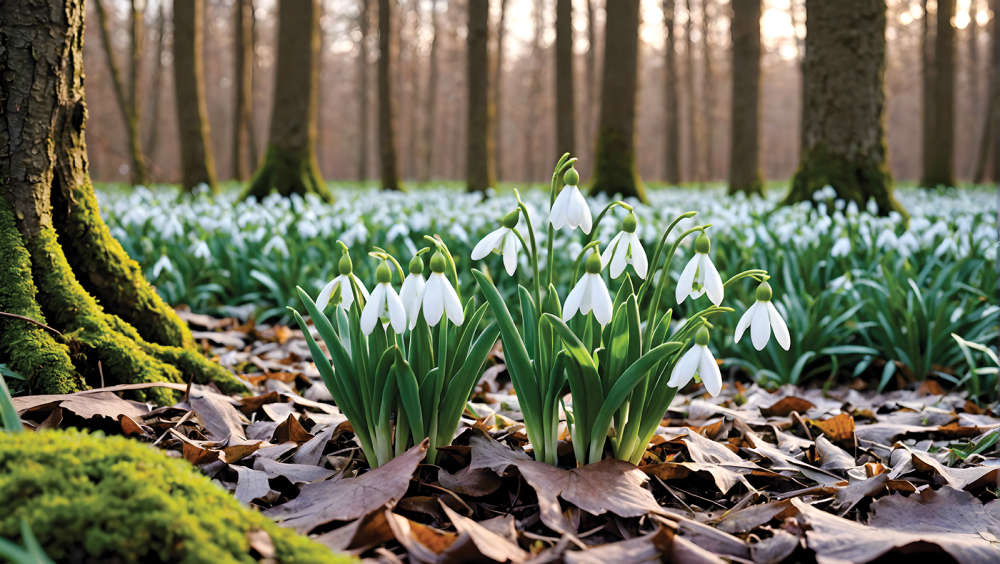 Blooming Times: Harbingers of Spring
Blooming Times: Harbingers of Spring
 Homes Extra: Home Sanctuary
Homes Extra: Home Sanctuary
 Home Style: Ancient & Modern
Home Style: Ancient & Modern
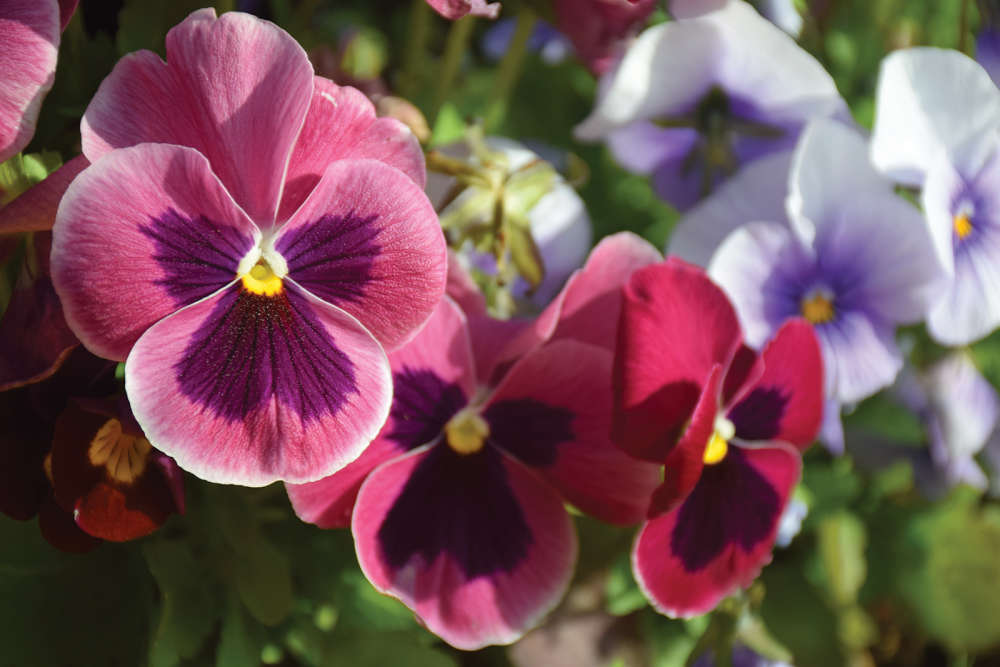 Blooming Times: Happy Faces
Blooming Times: Happy Faces
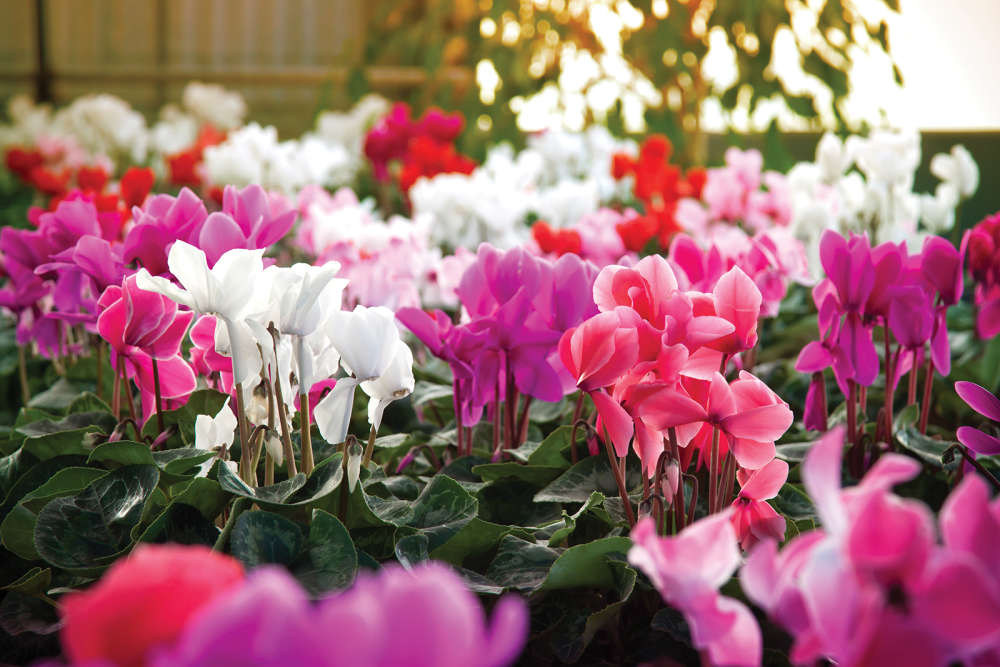 Blooming Times: Winter Sparklers
Blooming Times: Winter Sparklers
 Homes Extra: Restore, Repair, Recycle
Homes Extra: Restore, Repair, Recycle
 Home Style: A Scandi Winter's Tale
Home Style: A Scandi Winter's Tale
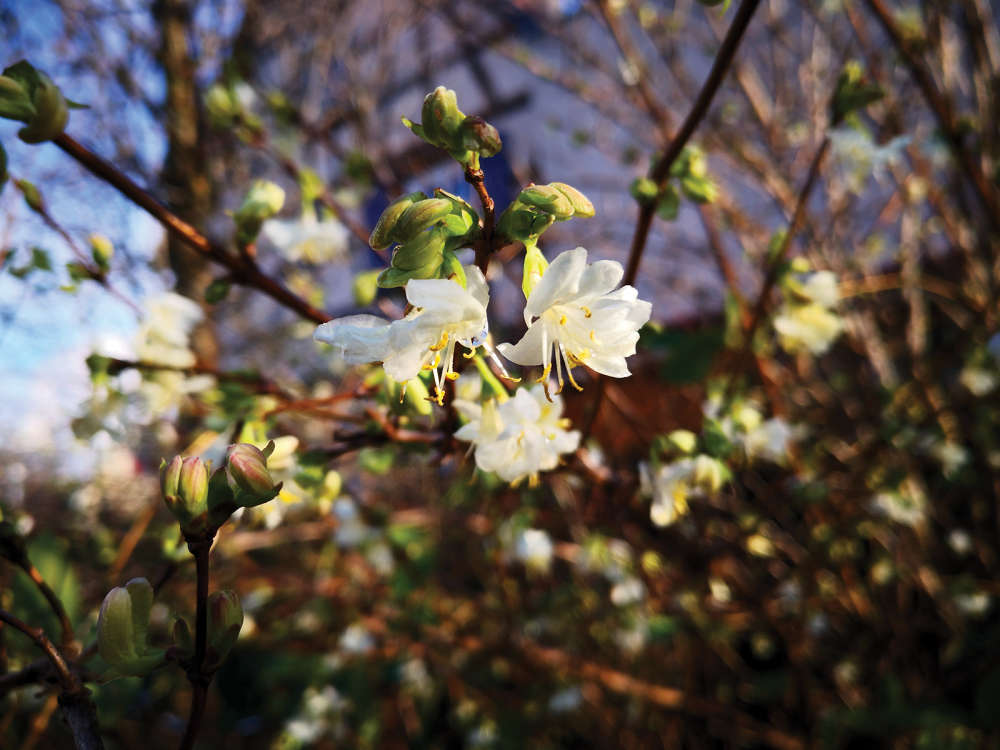 Blooming Times: Winter Wonders
Blooming Times: Winter Wonders
 Home Style: Bold, Brave & Beautiful
Home Style: Bold, Brave & Beautiful
 Blooming Times: The Answer Lies in the Soil
Blooming Times: The Answer Lies in the Soil
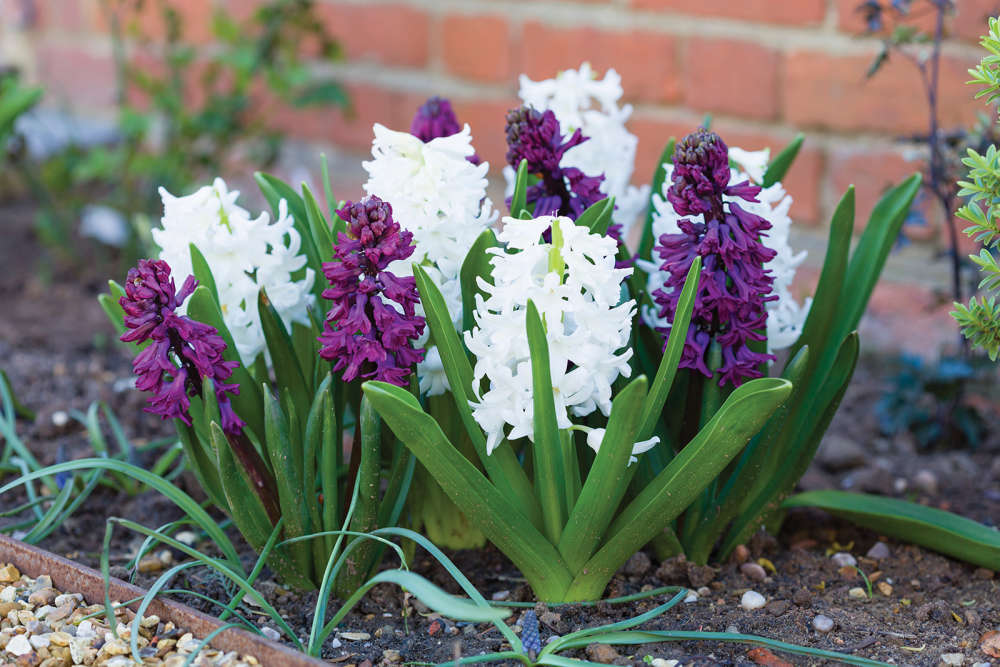 Blooming Times: Heavenly Hyacinths
Blooming Times: Heavenly Hyacinths
 Legendary Builds with Phoenix Construction Services
Legendary Builds with Phoenix Construction Services
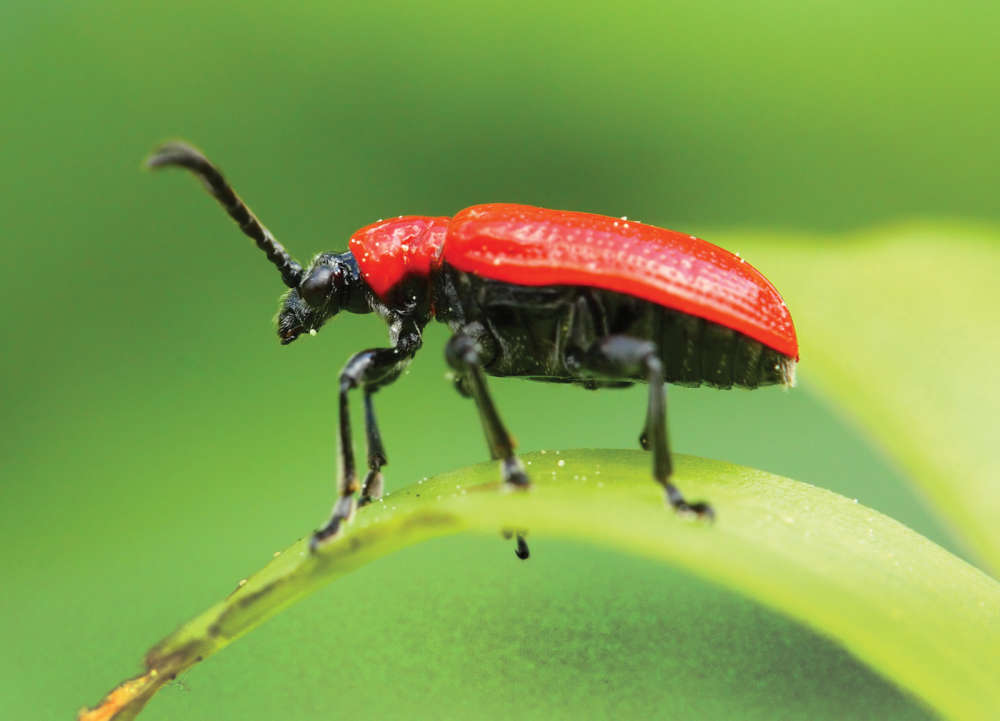 Blooming Times: Know Your Enemy
Blooming Times: Know Your Enemy
 Bespoke Dreams from Eridge Green Kitchens
Bespoke Dreams from Eridge Green Kitchens
 10 Hot Years: iFit Fires & Flues
10 Hot Years: iFit Fires & Flues
 Home Style: Bold Type
Home Style: Bold Type
 Home Style: A Better Way of Life
Home Style: A Better Way of Life
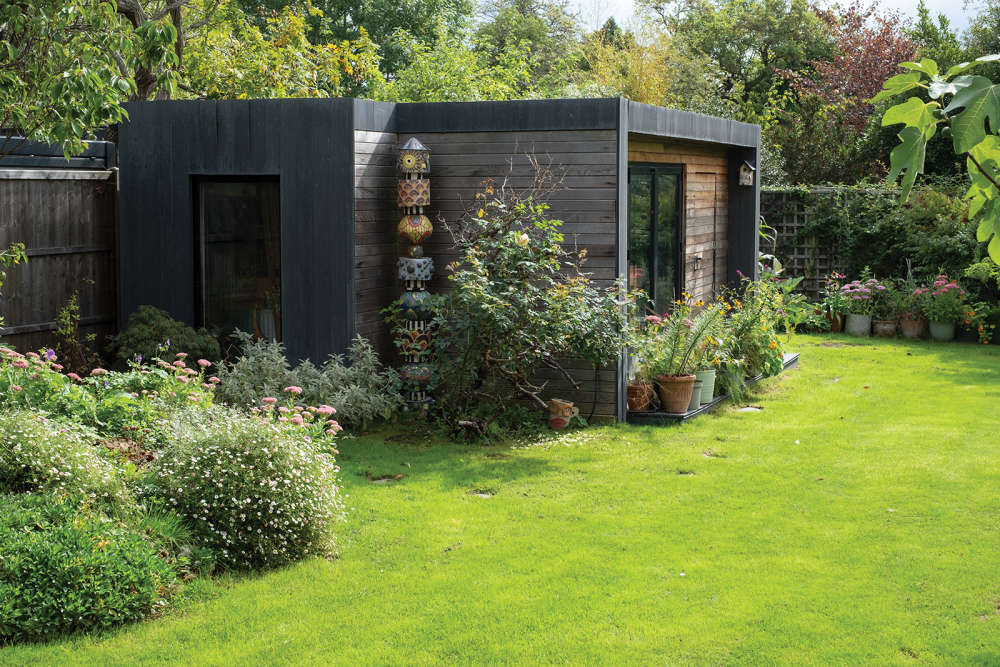 Homes Extra: Shed Space
Homes Extra: Shed Space
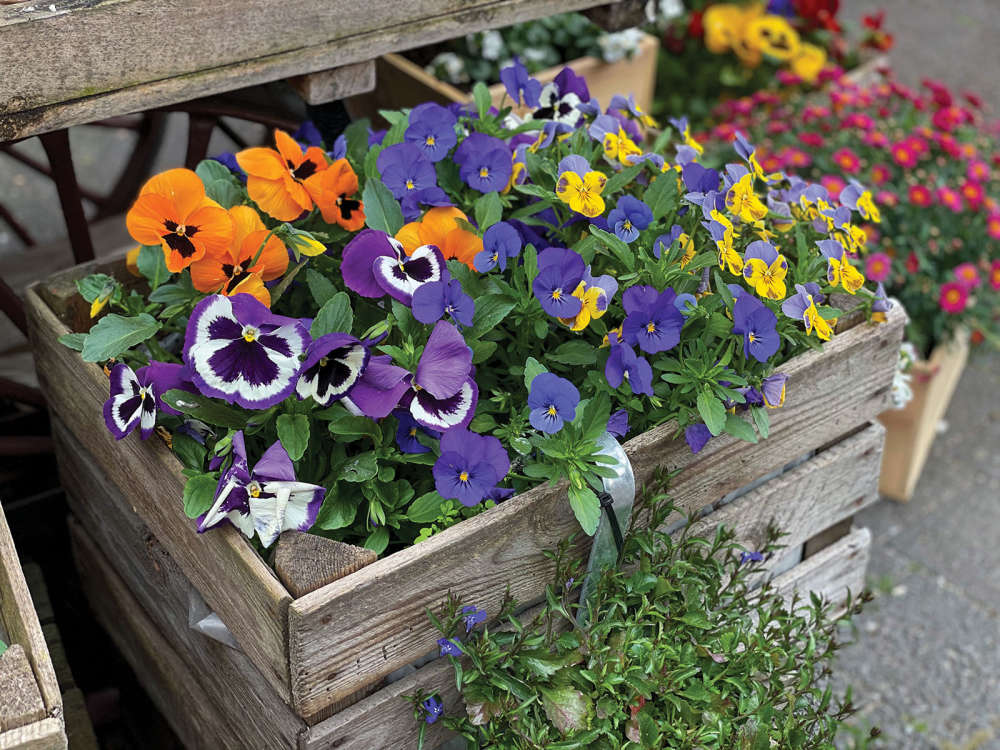 Blooming Times: Top of the Pots
Blooming Times: Top of the Pots
 Kids Zone: Get the Kids Growing
Kids Zone: Get the Kids Growing